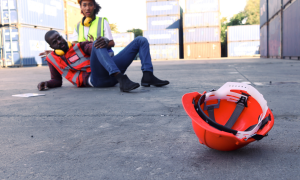Construction sites, bustling with activity, are often riddled with potential hazards. In these environments, accidents are not just a mere possibility but a looming reality. The severity and frequency of injuries in this industry underline the crucial need for awareness and preventative measures. Understanding these risks is vital for everyone involved, from workers to supervisors.
It is important to take legal action if you have been injured in a construction accident. You can obtain fair compensation for your losses with the help of experts like experienced construction accident attorneys at Reinartz Law Firm.
Before consulting with an attorney, it is important to know about the injuries commonly sustained by victims of construction accidents.
Head Injuries
In the dynamic environment of construction sites, head injuries are a frequent and serious concern. Often resulting from falls, flying debris, or accidents with machinery, these injuries can have lasting consequences. Types of head injuries common in construction accidents include:
- Concussions: Concussions are often caused by blows to the head or sudden, violent shaking.
- Traumatic Brain Injuries (TBIs): TBIs can range from mild to severe, affecting cognitive functions.
The long-term impacts of these injuries can be life-altering, affecting memory, concentration, and even personality. This highlights the paramount importance of protective gear like hard hats, which are essential for safeguarding workers against such devastating injuries.
Spinal Cord Injuries
Spinal cord injuries in construction often stem from falls, being struck by heavy objects, or accidents involving machinery. These injuries are particularly severe, with the potential to result in permanent disability, including partial or complete paralysis.
The aftermath of a spinal cord injury can be profound, necessitating extensive rehabilitation. Victims may need to relearn basic movements and adapt to new ways of living. The journey often involves both physical and emotional adjustments, with a focus on regaining independence and adapting to changes in daily life and work capabilities.
Fractures and Broken Bones
Fractures and broken bones are common in construction, typically resulting from slips, falls, or impacts with heavy materials and machinery. The nature of construction work involving heights and heavy lifting significantly increases these risks. Types of fractures often seen include:
- Stress fractures: Small cracks in the bone, usually due to overuse.
- Compound fractures: Where the broken bone pierces the skin, requiring immediate medical attention.
The recovery process can be lengthy, involving immobilization, physical therapy, and sometimes surgery. Preventing such injuries is crucial and requires adherence to safety protocols, the use of protective gear, and ensuring a safe working environment. Regular training and awareness can significantly reduce the occurrence of these painful and debilitating injuries.

Burns and Electrical Injuries
Construction sites pose significant risks for burns and electrical injuries, with exposed wiring, power tools, and hazardous materials being common culprits. These injuries can vary widely:
- Electrical burns: Electrical burns occur from contact with live wires or equipment.
- Chemical burns: Chemical burns are caused by corrosive substances like acids or solvents.
- Thermal burns: Thermal burns occur from fires or hot surfaces.
Immediate first aid is critical in these scenarios, often requiring emergency medical attention. Long-term care for severe burns may involve surgeries and rehabilitation. Beyond the physical scars, the psychological impact of such injuries can be profound, requiring emotional support and counseling for a complete recovery.
Amputations and Crush Injuries
In the construction industry, heavy machinery and equipment can lead to severe accidents, resulting in amputations and crush injuries. These traumatic events often occur due to machinery entanglement or being trapped between heavy objects. Emergency response is critical, focusing on stabilizing the victim and preventing further injury.
Medical treatment may involve surgeries and, in the case of amputations, fitting for prosthetics. Rehabilitation is a crucial component in helping victims adapt to life changes, regain functionality, and return to as normal a life as possible.
Lacerations and Abrasions
In construction, lacerations and abrasions are often caused by handling sharp tools, materials, or accidents with machinery. These injuries, while sometimes appearing minor, carry a significant risk of infection. Immediate and proper wound care is essential to prevent complications. To reduce the risk of such injuries, some vital preventative measures include:
- Using appropriate personal protective equipment (PPE), like gloves and long-sleeved clothing.
- Ensuring tools are well-maintained and safely stored.
- Conducting regular safety training on handling equipment and materials.
These steps are vital in maintaining a safer working environment.
Final Thought
The array of potential injuries in construction underscores the critical importance of robust safety protocols. Adhering to these measures, coupled with continuous education and safety training, can significantly mitigate risks.
The impact of construction-related injuries extends far beyond physical harm, affecting lives and livelihoods. It’s our collective responsibility to prioritize prevention, ensuring a safer work environment for all. Remember, every measure taken today can prevent a life-altering injury tomorrow.
If you have suffered any of the above injuries, then you should consult with an experienced lawyer who can guide you through the legal process.

